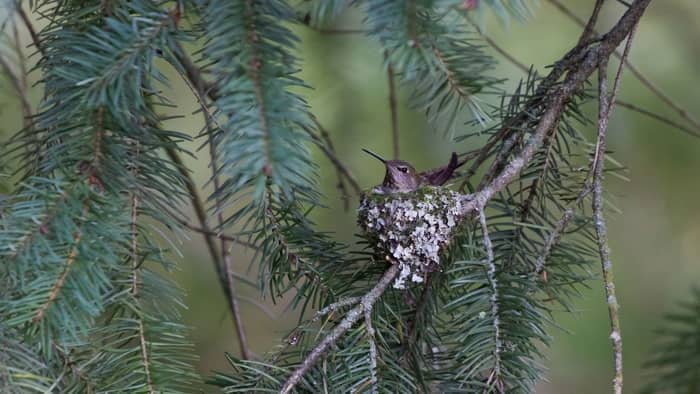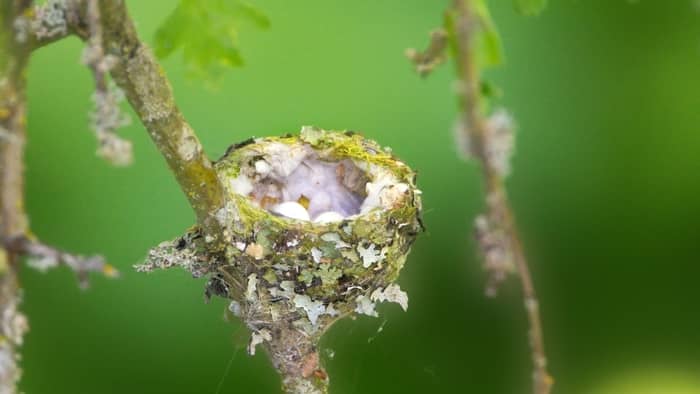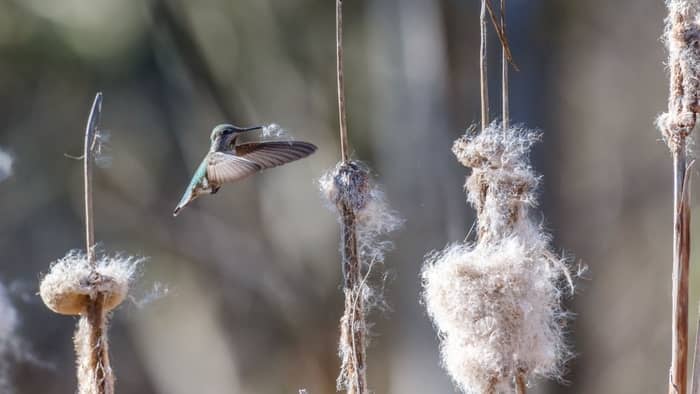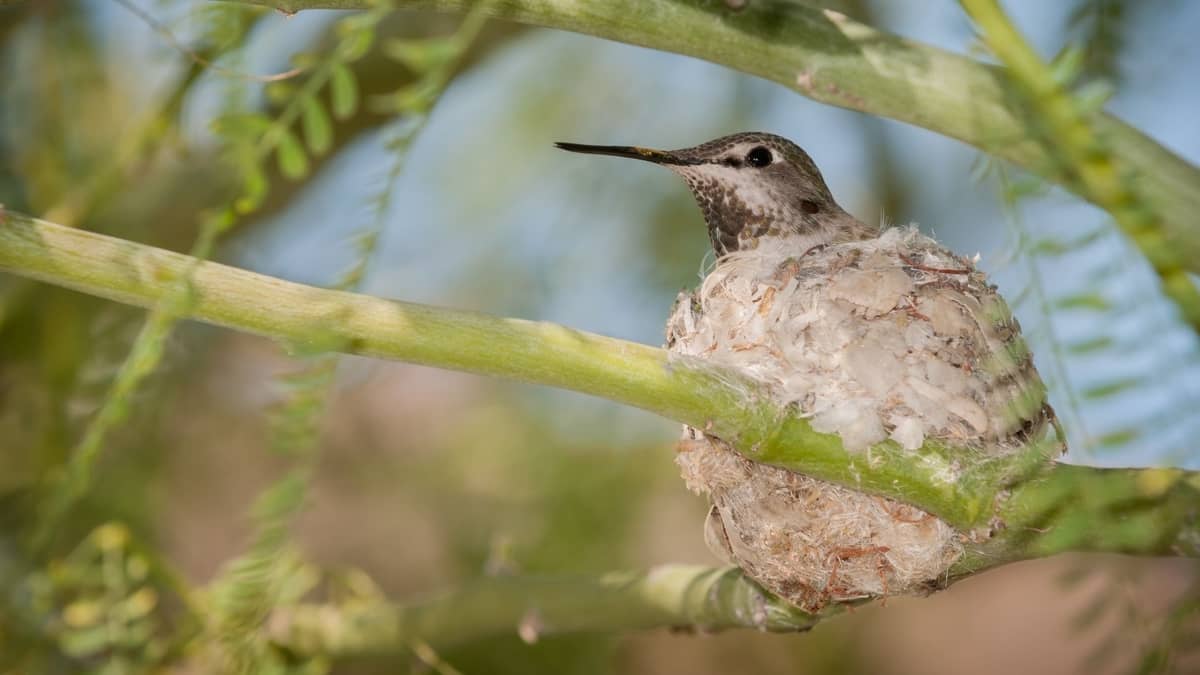It’s a thing of great joy seeing hummingbirds return during spring to their breeding grounds. Then seeing them back in gardens, farms, in the area generally brings about so much life and sparkle. But a thing of major concern has always been about knowing what kind of trees do hummingbirds nest in.
Although, you will get to see various species of these flying jewels in different places: Having them around in your garden or yard brings so much beauty and splendor.
Hummingbirds can as well be mysterious especially with regards to their nesting habits. They like to build their nests in a way that can hardly be noticed, just like camouflage.
Therefore, this article will be throwing more light on knowing what kind of trees hummingbirds do nest in.
Hummingbird’s Nest
Usually, it is the female hummingbird’s duty to raise the little ones without any assistance from the male.
Firstly the female hummingbird builds their nest, lays the eggs, and looks after her offspring. The nest of a hummingbird is usually small as the size of a thimble, such that it looks like a tree node. The nests are not only tiny but they are also built in a way that they are well hidden.

This is achieved by decorating the nests with lichen, moss, bark, and grass. You will need to look closely before you may get to know that it is even a nest.
Sometimes, hummingbirds build their nests under leaves. Hummingbirds usually lookout for certain factors when choosing a tree to nest in.
What Kind Of Trees Do Hummingbirds Nest In?
Below, let’s take a look at the two major factors.
1. Surrounding Location
Rather than building the nest directly in a fork, the hummingbird builds it on a slender yet descending branch. They build their nests on deciduous trees like hornbeam, birch, oak, hackberry, poplar, and sometimes pine.
The particular spot is normally 1 ½ foot away from a thin branch end. This way, it won’t be easy for predators to get to the nest. You can find the branch between 3 to 60 feet off ground level.
The hummingbird makes sure to build a nest where it can be sheltered from the rain and wind. All thanks to the leaves that are a few inches above the nest. Hummingbirds usually avoid windy areas.
Hence they prefer to nest on trees that are in clusters. This is because they give more shelter than trees that are by themselves.

2. Southern locations
Hummingbirds prefer to build their nests at cooler locations. But in the south, the temperature usually goes very high up to 100s. If a hummingbird lays eggs in a place with temperatures above 97 degrees Fahrenheit, the eggs will cook in a few hours.
Hence, in this kind of location, hummingbirds would rather prefer to nest on trees with broadleaf. This is because the leaves usually hold some water and then pour down some drops of water from time to time, thereby making the area cool.
In most cases, they build their nests close to or above a mass of water like stream borders. Like an area with a body of water is usually cool.
Oaks, birch, sycamore, maples, poplar, fruitless mulberry, and elm are usually their favorite deciduous trees.
3. Northern locations

The northern parts are usually cold and this is usually an issue for hummingbirds. In this case, areas, where hummingbirds can conserve heat, are where they look for.
In this kind of situation, they search for places that have trees with drooping branches or descending or overhanging limbs.
According to Ornithology, the kinds of trees that will help hummingbirds in conserving heat include conifers, cottonwood, willows, and alders.
4. Availability Of Food
Due to the fact that hummingbirds have high a metabolism, they need to consume nectar twice their body weight every day. This is why the availability of an abundance of food and their sources is crucial to hummingbird survival.
So, hummingbirds will prefer to have their nests very close to where they can get food to feed. Also, the female mothers put their little ones into consideration.
Hummingbirds also eat insects which is a source of protein for them. Therefore, endeavor to make available or plant trees where nectar and insects can be found as they will be more attractive to hummingbirds. These trees could be any type as long as they have nectar and insects on them.

Places Where You May Find Hummingbirds’ Nests
As it’s been explained earlier on, hummingbirds usually lookout for a series of factors when it comes to nesting.
But some hummingbird species, like the Ruby-throated hummingbirds most especially, have adjusted in some aspects and adapted to urbanization. You can find them nesting on plant hangers, wires, and other man-made items.
But most of them prefer covers of deciduous trees that are found growing close to water. The foliage of these deciduous trees provides hummingbirds shelter from wind and rain. Also, water helps to cool the area.
Can You Make Hummingbirds Nest In Your Area?
If you’re thinking you can make hummingbirds nest inside birdhouses like other common backyard birds, you may be wrong. But there are ways to attract hummingbirds to nest in your yard.
- You can start by availing or planting native flowering plants, annuals, and perennials. And also, plant both shrubs and trees with large foliage that can be grown easily in your location.
- Remember to choose trees or shrubs that produce flowers that are of hummingbirds’ favorite colors. These are red, pink and orange flowers.
- Make available dependable sources of water supply.
- Don’t use chemicals that can be harmful to these birds and the insects they prey upon.
- Also, maintain a proper supply of “nectar solution” in clean hummingbird feeders.

Conclusion
Knowing what kind of trees hummingbirds do nest in and ways to attract them to your garden will help to keep them coming to your garden. Also, you will be certain of having a beautiful and bubbly atmosphere in your garden at all times.
[rank_math_rich_snippet id=”s-e2ab1bd4-d7e6-4e75-8458-daea20df69f3″]

